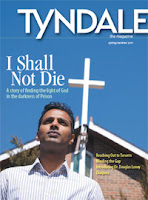I have been making my way slowly through Eugene Peterson's, Eat this Book: A Conversation in the Art of Spiritual Reading . I say slowly because I often find myself rereading sections and taking to heart his comments about the need to gnaw on words. Peterson is talking specifically about reading Scripture, but there is a depth to his writing and experience that requires his words to be read over. Here is a quote from the end of his first chapter entitled "The Forbidding Discipline of Spiritual Reading" (p. 11). "Reading is an immense gift, but only if the words are assimilated, taken into the soul--eaten, chewed, gnawed, received in unhurried delight. Words of men and women long dead, or separated by miles and/or years, come off the page and enter our lives freshly and precisely, conveying truth and beauty and goodness, words that God's Spirit has used and uses to breathe life into our souls. Our access to reality deepens into past centuries, spreads across co...

